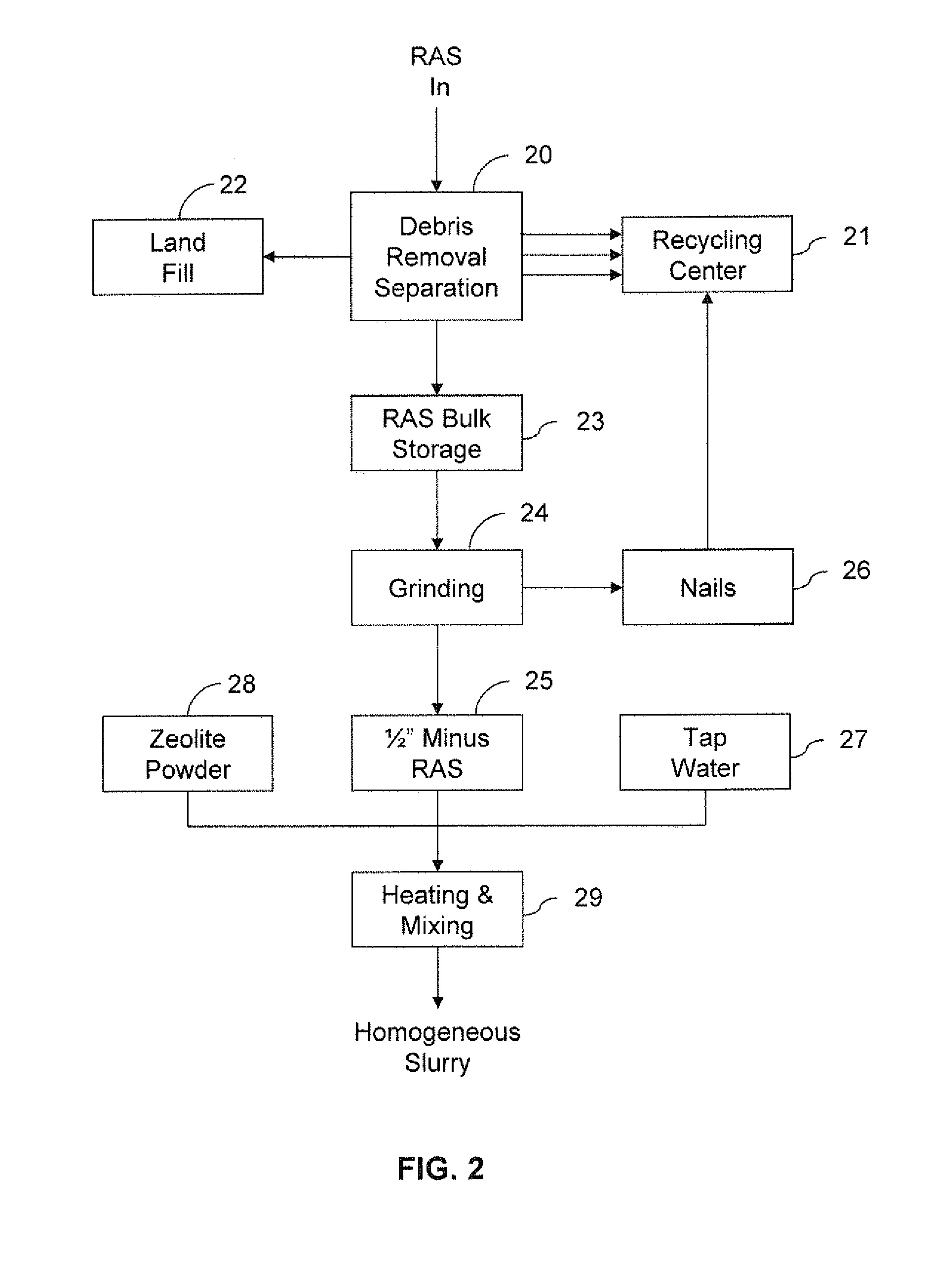Method Of Converting Tear-Off Asphaltic Shingles To A Formed Product
a technology of tear-off asphalt and formed products, which is applied in the direction of transportation and packaging, chemistry apparatus and processes, and other domestic articles, etc., can solve the problem of increasing the burden on waste management resources
- Summary
- Abstract
- Description
- Claims
- Application Information
AI Technical Summary
Benefits of technology
Problems solved by technology
Method used
Image
Examples
Embodiment Construction
[0012]Referring first to FIG. 1 of the drawings, the raw material for the conversion process, tear-off and prompt scrap 2 and 4 are inspected at 5 for the presence of hazardous materials, such as asbestos. The raw material that is not suspected of containing hazardous material 6 is sent directly to the first step of the second phase, debris removal and separation 20 (FIG. 2). The batch or lot of raw material 7 that is suspected of containing hazardous material is quarantined at 9 and a sample of the lot is tested at 11 to positively identify suspected substances. If the test sample is positive for hazardous material 13, the quarantined batch is redirected to a proper disposal 15. If the tested sample returns a negative result 17, the batch is removed from quarantine 19 and sent to the first step of the second phase, debris removal and separation 20.
[0013]The second phase of the conversion process begins at 20 with the removal from the RAS of foreign materials such as aluminum, steel...
PUM
| Property | Measurement | Unit |
|---|---|---|
| pressure | aaaaa | aaaaa |
| temperature | aaaaa | aaaaa |
| temperature | aaaaa | aaaaa |
Abstract
Description
Claims
Application Information
 Login to View More
Login to View More - R&D
- Intellectual Property
- Life Sciences
- Materials
- Tech Scout
- Unparalleled Data Quality
- Higher Quality Content
- 60% Fewer Hallucinations
Browse by: Latest US Patents, China's latest patents, Technical Efficacy Thesaurus, Application Domain, Technology Topic, Popular Technical Reports.
© 2025 PatSnap. All rights reserved.Legal|Privacy policy|Modern Slavery Act Transparency Statement|Sitemap|About US| Contact US: help@patsnap.com



